#mudéjar art
Explore tagged Tumblr posts
Text
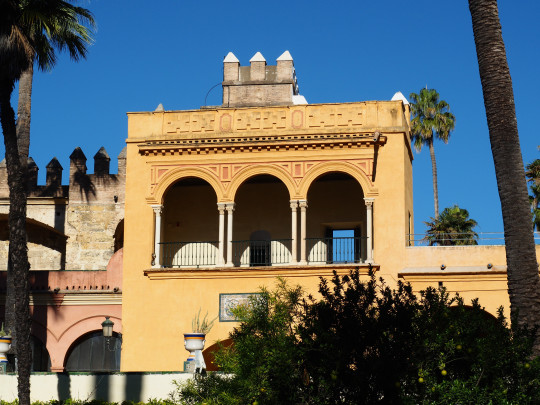

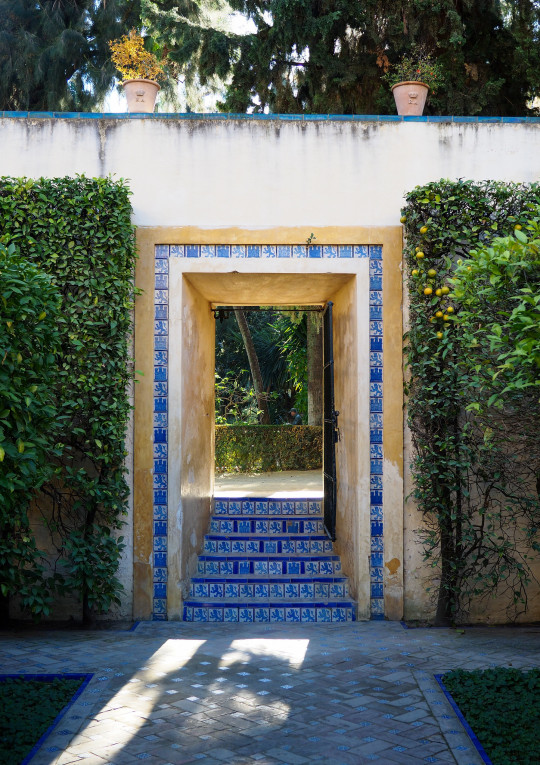
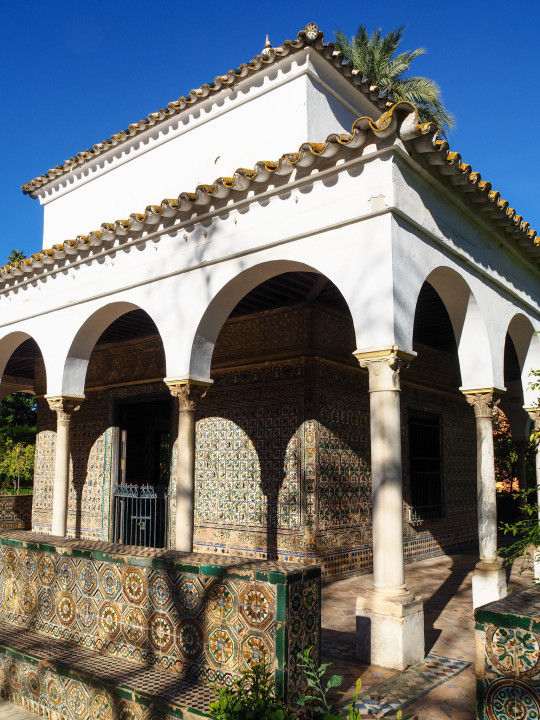
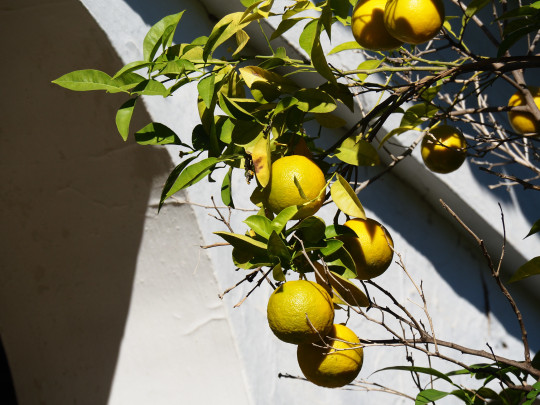

Real Alcázar de Sevilla (2) (3) (4) (5) (6) by Robert Schaub
177 notes
·
View notes
Text
For #WorldLionDay on #Caturday 🦁:

Ceiling Tile (socarrat) with Design of a Lion
Paterna, Valencia region, Spain, 2nd half 15th c.
Mudéjar style earthenware ceramic, 14 x 17 5/16 x 15/16 in. (35.5 x 44 x 2.4 cm)
Saint Louis Art Museum 37:1939
#animals in art#animal holiday#european art#lion#feline#wild cat#Caturday#World Lion Day#Spanish art#Iberian art#Mudéjar art#tile#ceramics#architectural art#Saint Louis Art Museum#15th century art
16 notes
·
View notes
Text





El Real Alcázar de Sevilla es un conjunto palaciego amurallado en diferentes etapas históricas. El Palacio original se edificó en la alta Edad Media. Se conservan algunos vestigios de arte islámico, un espacio palaciego mudéjar y otro de estilo gótico.
ES UNA MARAVILLA!!!
Quiero recordar que unos capítulos de Juegos de Trono se grabó aquí. Alguien sevillano nos lo confirme.
27 notes
·
View notes
Text

The dragon and the unicorn 🐉🦄
Inspired by medieval mudéjar art
17 notes
·
View notes
Text
btw tumblrinas i am happy to go through this oposiciones journey with you. i like to think you see me posting about a specific thing during a couple of days and you go 'oh so vivi is on the art history section again can't wait for him to comment on his love of mudéjar again'
#yes i am on the 19th century thanks for asking#also i gotta say. i love mudéjar <3#AND neomudéjar!#i think all new buildings should be neomúdejar but whatever#imagine a mudéjar skyscraper
5 notes
·
View notes
Text
Magia medieval: el profundo impacto y la importancia del arte medieval

Cuando se habla de la Edad Media viene a la mente un aura encantadora, un periodo definido por grandiosos castillos, valerosos caballeros y un arte extraordinario que transformó el paisaje cultural. A través de la niebla de los siglos pasados, el arte medieval es una parte enigmática pero fundamental de nuestro patrimonio común, una época repleta de relatos simbólicos y estilos transformadores que enriquecieron y cambiaron para siempre la historia del arte.
La Revolución Artística de la Edad Media: Mosaicos, Frescos y Esculturas
En el lapso de aproximadamente mil años (500 a 1500 d.C.), el mundo fue testigo de una prodigiosa revolución artística que se manifestó en diversas formas: mosaicos, frescos, orfebrería, esculturas, manuscritos iluminados y vidrieras, cada una de ellas una página de valor incalculable del voluminoso libro de la expresión humana. Es crucial reconocer que estas formas de arte no eran meras declaraciones estéticas. Por el contrario, a menudo estaban cargadas de significado simbólico, alegorías religiosas, lecciones morales o crónicas históricas.
El periodo bizantino, una de las primeras fases del arte medieval, estuvo muy influido por la sensibilidad cultural y religiosa del Imperio Romano. Una de las características más destacadas fue el abandono de la representación naturalista en favor de formas más simbólicas y espirituales. Mosaicos de oro resplandeciente y tonos brillantes, imágenes icónicas de Cristo y los santos, presentadas de forma etérea, casi surrealista, sirvieron de faro de esperanza, misterio y conexión divina en las primeras basílicas cristianas.
En cambio, el arte románico, que apareció en torno al siglo X, se caracterizó por el resurgimiento de la escultura en piedra, los avances arquitectónicos y los frescos llenos de vida. Los artistas se adentraron en un juego expresivo de formas y espacios, demostrando un don para la grandeza y la ornamentación. Estas obras, colosales pero bellamente detalladas, fueron fundamentales para reflejar el espíritu de la cultura, en la que la sociedad comenzó a fomentar un sentido más definido de la individualidad y la autoexpresión.
Del Románico al Gótico: Una Evolución de Grandeza y Esplendor
Sin embargo, fue el periodo gótico, entre los siglos XII y XV, el que marcó el comienzo de la edad de oro del arte medieval. Con la invención del arco apuntado y el arbotante, la arquitectura alcanzó nuevas cotas, tanto literal como metafóricamente. Las catedrales se alzaban sobre las ciudades, con sus agujas perforando el cielo, como testimonio de la magnificencia del esfuerzo humano. Las vidrieras iluminaban estas maravillas arquitectónicas con luz caleidoscópica, narrando historias bíblicas con una vitalidad fascinante. También los manuscritos iluminados cautivaban los corazones con su ornamentada caligrafía e intrincadas iluminaciones que convertían cada página en un retablo radiante.
A menudo se tilda erróneamente al arte medieval de estrictamente religioso, monótono e incluso austero. Sí, la religión era un tema dominante -después de todo, la Iglesia era el principal mecenas de las artes durante esta época-, pero los artistas también encontraban inspiración en la mitología, el folclore y las sencillas alegrías y penas de la vida cotidiana. Desarrollaron lenguajes visuales únicos, ricos en símbolos y metáforas, que abrieron una ventana panorámica a la psique humana y a la sociedad de la época.
El Arte Medieval como Testigo de la Interacción Cultural
Además, el arte de esta época estuvo marcado por la interacción de culturas. La influencia islámica en España, por ejemplo, dio origen al arte mudéjar, que mezclaba elementos artísticos islámicos y cristianos en un estilo único. Las invasiones vikingas dejaron huella de su rica ornamentación en tallas y metalistería. Estos intercambios y simbiosis subrayan la idea de que el arte, a pesar de las fronteras geográficas y culturales, es una red interconectada de expresiones e influencias compartidas.
Mientras nos maravillamos ante los intrincados mosaicos de Rávena, la grandeza de la catedral de Chartres o las ornamentadas páginas del Libro de Kells, no olvidemos que estas obras maestras son algo más que reliquias del pasado. Son testimonios silenciosos pero elocuentes de nuestro viaje colectivo como especie, que ilustran una historia de resistencia humana, creatividad y el profundo deseo de dar sentido al mundo que nos rodea y a nuestro lugar en él.
En la gran narrativa de la historia del arte, el arte medieval ocupa un lugar de innegable importancia. Sigue siendo un espejo cautivador que refleja un pasado lejano pero extrañamente familiar, una época de transición, experimentación e inmensa creatividad. Nos invita a dar un paso atrás, admirar y profundizar en las historias intemporales grabadas en piedra, tinta, vidrio y oro, recordándonos siempre nuestra capacidad colectiva de expresión artística e intercambio cultural. Al fin y al cabo, el arte es el lenguaje que no conoce fronteras ni tiempo, que resuena continuamente a través de los anales de la historia de la humanidad, siempre en evolución y siempre inspirador.
Originally published at https://artemartinprieto.com/on May 13, 2023.
2 notes
·
View notes
Text
*sigh.* okay I know this post has a lot of notes so this has likely been said many times before (so sorry) but from what I can see from the picture, this is actually NOT a Spanish (Christian kingdoms of Spain) fortress! Kind of. At least not in the way described in the post. Let me explain.
Now I'm not Spanish myself, I just study this stuff, but I've spent a decent amount of time visiting places like the one in this photo (twice. I've been there.) and studying history and architecture from this period so this claim immediately threw up a bunch of red flags for me. Because uhhhh. Muslims clearly built this fortress.
And when I say "this fortress" I'm referring to the Alhambra. Yeah, this Alhambra.

Ok so basically while I can't confirm 100% this is the Alhambra because none of the angles on the digital tour or in my own photos show that specific angle (notably, the broken wall) I can say with near certainty that he's at the Alhambra. Look at the photo again:


You can see similar features in the 2nd photo (an image I captured of the Alhambra this summer!) The strange point [location 1] in the background of our picture (NOT typical of Moorish architecture) would then be part of the Palace of Carlos V (King of Spain), where we can see the architecture style is markedly different.
& don't play the fortress vs. palace game with me! While our guy above is clearly standing somewhere in the Alcazaba (fortress portion, on the right), the oldest portion of the site, we can see similar buildings below Carlos V's palace, those being the palaces of the Nasrid dynasty, the series of Muslim rulers who were defeated when Ferdinand and Isabel took Grenada in 1492, ending the reconquista and taking the Alhambra as their own seat of power.
Basically the joke here (while funny!!) Isn't accurate because his claim that the Spanish built this fortress is incorrect bc even if it wasn't the Alhambra (which it totally is) it means that the Spanish would had to have built a fortress specifically following the styles and architecture of their enemy sometime during the centuries of reconquista instead of just. taking over a muslim-built fortress and adding a few of their own bits and pieces (maybe). Which like they're known for doing.
Like there are some historically Christian-built buildings that exist in imitation of Muslim architectural styles that do exist in Spain - aka the Mudéjar art style (ex: Pedro I's Palace in the Alcázar of Sevilla for one) but you wouldn't see that with a fortress??? Idk this got long but it's a strange claim that any Christian king would have built this, especially if it is (it is) the Alhambra which is like very famously and very clearly Islamic site. Like in the palaces they have Quran verses engraved into the walls and everything. Like that's literally what it's known for?? Also the founding purpose wouldnt be to "keep the Muslims out" it would just be to keep other ppl out. Bc thats what a fortress is for. Also Muslims built it.
TLDR; the joke is funny but does not work historically with the location pictured (where it makes no sense), which was used for essentially the exact opposite purpose described in the post. So anyways love the spirit but he would have made more sense going for a "reverse reconquista" joke instead
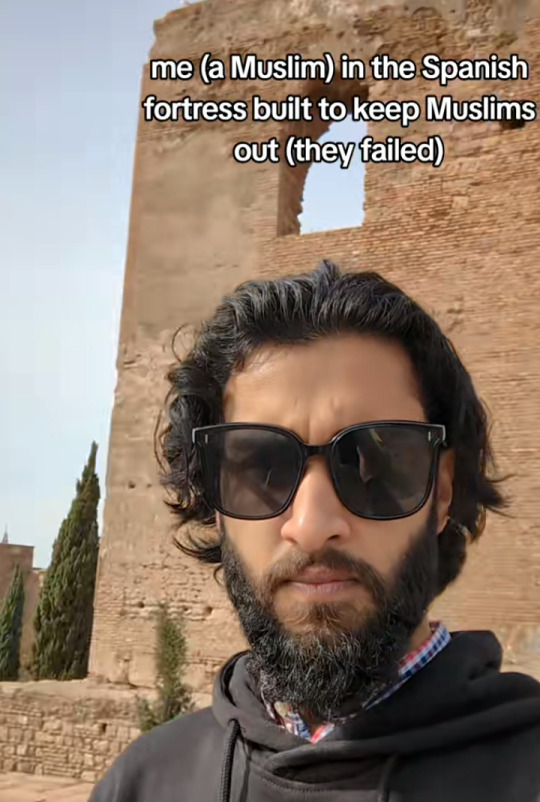
#this got sooooo long im sorry but like. i literally study this and what hes saying makes no sense im sorry#i mean i guess its theoretically possible its some other fortress where this happened but like. dude its the alhambra clearly. hes visiting#the alhambra.#i literally guided a tour of this entire freaking complex for my university theres a 0% chance the castilians or whoever built that wall#behind him. 0%. id put more money on it being the romans over them (CLEARLY not the romans) like im sorry. no.#anyways apologies to prev and op and whoever has to see tjis bc it got long and isnt the most well explained (its late) but like. 👍#i think the joke is rlly funny but i study this stuff so likee#anyways if i got a vocab word wrong (mispelled nasrid or smth) it bc i had to google the english words for some things bc i only knew#them in spanish bc thats what i gave the tour in etc.#anyways love talking abt this kind of stuff. i have many more alhambra fun facts floating around btw#also i KNOW carlos v is technically carlos i of spain but hes carlos v of the holy roman empire and literally everyone calls him carlos v so#like shut up abt it <3 thats the guys name lets not be pedantic (hypocritical statement of me)
101K notes
·
View notes
Text
0 notes
Text

It was built in 1453 by the illustrious bishop of Avila, Don Alonso de Fonseca, under the direction of the architect Ali Caro.
The Coca Castle is one of the most beautiful examples of Spanish Mudéjar Gothic art. Its construction amazes and loves it for the first time, as in every brick form it expresses an architectural ensemble as original and innovative as few people.
It highlights the unique beauty of its rooms, represented by beautiful Mudéjar geometric decorations made of stucco and paintings, which also gives us a unique and unrepeatable legacy.
1 note
·
View note
Text
Antoni Gaudí: The Visionary Architect Who Defined Barcelona
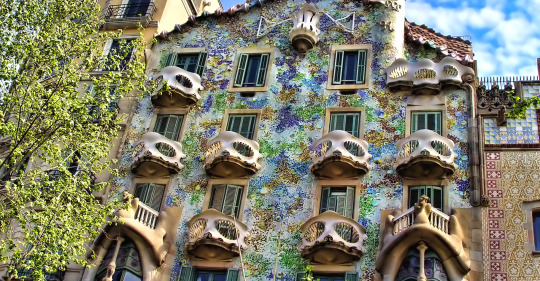
When one thinks of Barcelona's unique architectural landscape, one name inevitably springs to mind: Antoni Gaudí. Often searched for online using terms like "architecte barcelone gaudi," this Catalan genius wasn't just an architect; he was a sculptor of buildings, a master of light and color, and a visionary whose work continues to astound and inspire visitors from around the globe. His organic forms and intricate details are inextricably linked with the identity of Barcelona itself. This article delves into the life, style, masterpieces, and enduring legacy of Antoni Gaudí, the quintessential Barcelona architect.
Who Was Antoni Gaudí? The Man Behind the Magic
To understand Gaudí's architecture, it's essential to understand the man and his context. His life and influences shaped the revolutionary style that would make him famous.
Early Life and Education
Antoni Gaudí i Cornet was born in 1852 in the Catalan region of Spain, likely in Reus or Riudoms. From a young age, he suffered from poor health (rheumatism), which often kept him outdoors, where he developed a deep appreciation and understanding of nature – an influence that would become central to his work.
He moved to Barcelona in 1869 to study architecture at the Provincial School of Architecture (Escola Tècnica Superior d'Arquitectura). He was not always a model student, but his undeniable talent shone through. Upon his graduation in 1878, the school's director, Elies Rogent, famously declared: "We have given this academic title either to a fool or a genius. Time will show."
Influences and Artistic Development
Gaudí's work was shaped by several key influences:
Nature: He saw nature as God's perfect architecture, observing its structures, forms, and efficiency. Trees became columns, skeletal structures inspired vaults, and shells influenced spiral staircases.
Religion: A devout Catholic, Gaudí viewed his work as a service to God. Religious symbolism is deeply embedded in many of his projects, most notably La Sagrada Família.
Catalan Identity: Gaudí was a proud Catalan and a key figure in the Modernisme movement (Catalan Modernism), which sought to revive and modernize Catalan culture and arts at the turn of the 20th century.
Historical Styles: While revolutionary, Gaudí also drew inspiration from Gothic, Moorish (Mudéjar), and Baroque architecture, reinterpreting these styles in entirely original ways.
Gaudí's Architectural Style: Catalan Modernisme Perfected
Gaudí's style is instantly recognizable yet difficult to categorize neatly. It's a highly personal interpretation of Modernisme, pushing its boundaries towards something entirely unique.
Nature as the Ultimate Guide\
Gaudí famously avoided straight lines and right angles, believing they didn't exist in nature. His buildings feature flowing curves, warped surfaces, and organic shapes that mimic natural forms. He studied geometry intensely, but primarily the complex geometries found in the natural world.
Innovative Structural Solutions
He was a master engineer as well as an artist. Gaudí pioneered techniques like:
Catenary Arches: These parabolic arches, derived from the natural curve of a hanging chain, allowed him to create strong, elegant structures without the need for heavy buttresses typical of Gothic architecture.
Hyperbolic Paraboloids: Complex, saddle-shaped surfaces used in vaults and windows.
Inclined Columns: Mimicking the way trees grow to support their branches, providing efficient load-bearing.
Mastery of Materials and Crafts
Gaudí embraced a wide range of materials, often using them in unconventional ways. He collaborated closely with skilled artisans in ceramics, stained glass, wrought iron, and carpentry. His signature trencadís – mosaic created from broken ceramic tiles, glass, or crockery – allowed him to cover curved surfaces with vibrant color and texture, turning waste into art.
Gaudí's Masterpieces in Barcelona: An Architectural Pilgrimage
As the most famous architecte barcelone, Gaudí left an indelible mark on the city. His key works are must-see attractions:
La Sagrada Família: The Unfinished Symphony
Gaudí's magnum opus, the Basílica de la Sagrada Família, is arguably the most famous construction site in the world. He took over the project in 1883 and dedicated the last 43 years of his life to it, transforming it completely. Its towering spires, intricate façades depicting biblical scenes (Nativity, Passion, Glory), and forest-like interior columns inspired by trees showcase the culmination of his architectural and spiritual vision. Though still under construction (funded by visitor tickets), it's a breathtaking testament to his genius.
Park Güell: A Whimsical Urban Oasis
Originally conceived as a high-end residential estate for Gaudí's patron Eusebi Güell, Park Güell evolved into a unique public park. It exemplifies Gaudí's playful side and his integration of architecture and nature. Key features include:
The iconic mosaic dragon (or salamander) fountain guarding the entrance.
The Hypostyle Hall with its Doric-inspired columns (originally intended as the marketplace).
The winding, serpentine bench covered in vibrant trencadís mosaic, offering panoramic city views.
Viaducts and pathways designed to blend seamlessly with the hillside topography.
Casa Batlló: The House of Bones and Dreams
A radical remodelling of an existing building on the prestigious Passeig de Gràcia, Casa Batlló is a fairy tale brought to life. Its façade evokes marine life, bones, and masks, with balconies resembling skulls and pillars like bones ('House of Bones'). The roof is arched like the back of a dragon, covered in iridescent scales. The interior is equally fluid and imaginative, showcasing Gaudí's attention to every detail, from ergonomic door handles to swirling ceilings.
Casa Milà (La Pedrera): The Stone Quarry
Just down the street from Casa Batlló lies Casa Milà, popularly known as 'La Pedrera' (The Stone Quarry) due to its undulating, cliff-like stone façade. It was revolutionary for its time, featuring an open-plan structure, underground parking, and two large interior courtyards for light and ventilation. The rooftop is spectacular, with sculptural chimneys and ventilation towers often compared to surreal warriors or abstract forms.
Other Notable Works
While the above are his most famous, other significant Gaudí buildings in and around Barcelona include:
Casa Vicens: One of his first major commissions, showcasing Moorish influences and vibrant tilework.
Palau Güell: A C C mansion near Las Ramblas, notable for its opulent interior and parabolic arches.
Colònia Güell Crypt: An unfinished church project where Gaudí tested many structural ideas later used in La Sagrada Família.
The Legacy of Antoni Gaudí: Barcelona's Architectural Soul
Antoni Gaudí's life was tragically cut short in 1926 when he was struck by a tram. However, his influence and legacy endure powerfully.
UNESCO World Heritage Recognition
His unique contribution to architecture has been recognized globally. Seven of his works in or near Barcelona have been collectively designated as a UNESCO World Heritage site: Park Güell, Palau Güell, Casa Milà, Casa Vicens, the Nativity Façade and Crypt of La Sagrada Família, Casa Batlló, and the Crypt at Colònia Güell. This highlights his "exceptional creative contribution to the development of architecture and building technology in the late 19th and early 20th centuries."
Enduring Inspiration
Gaudí's work continues to fascinate architects, artists, and designers worldwide. His innovative use of materials, integration of crafts, structural ingenuity, and deep connection to nature remain profoundly relevant. For anyone visiting Barcelona, experiencing the works of this visionary architecte barcelone is not just sightseeing; it's stepping into a world shaped by unparalleled imagination.
Visiting Gaudí's Barcelona Today
Planning a trip focused on Gaudí's architecture requires some preparation:
Book Tickets in Advance: Major sites like La Sagrada Família, Park Güell, Casa Batlló, and Casa Milà are extremely popular. Booking tickets online well in advance is essential to guarantee entry and avoid long queues.
Consider Guided Tours: Tours can offer deeper insights into the symbolism and techniques used by Gaudí.
Allow Ample Time: Don't rush your visits. Each building is rich in detail and deserves time for proper appreciation.
Explore Beyond the Big Four: If time permits, seek out lesser-known gems like Casa Vicens or Palau Güell.
Conclusion: The Genius of "Architecte Barcelone Gaudí"
Antoni Gaudí was more than just Barcelona's most famous architect; he was an artist who built his dreams. His unique blend of natural forms, spiritual devotion, Catalan pride, and groundbreaking engineering created an architectural language unlike any other. His buildings are not mere structures; they are immersive experiences that continue to define the visual identity and attract millions to Barcelona. Understanding Gaudí is key to understanding the soul of this vibrant Catalan capital. His legacy as the ultimate "architecte barcelone gaudi" is firmly cemented in the stone, ceramic, and iron that shape the city's skyline.
0 notes
Text
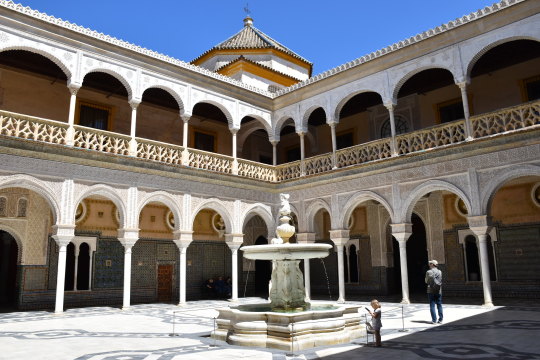

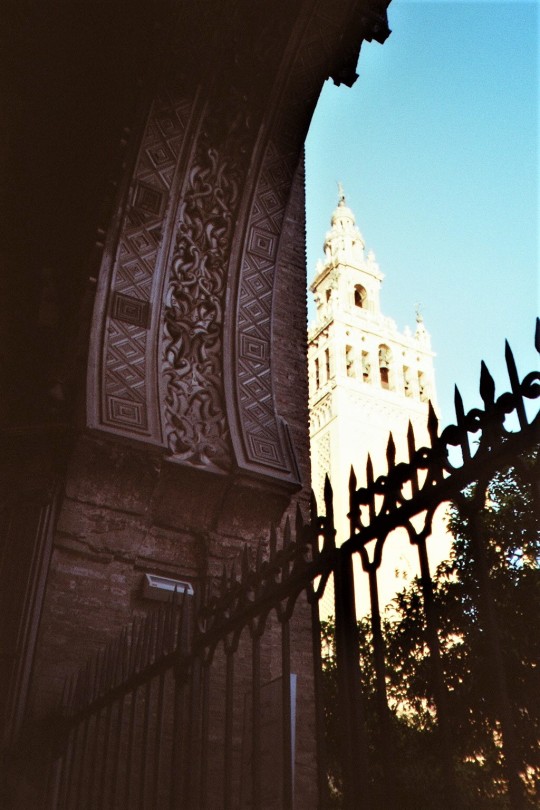
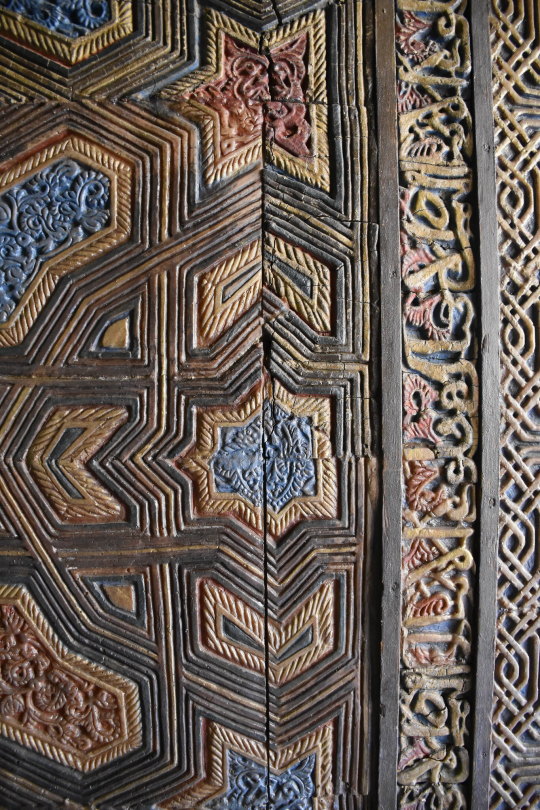
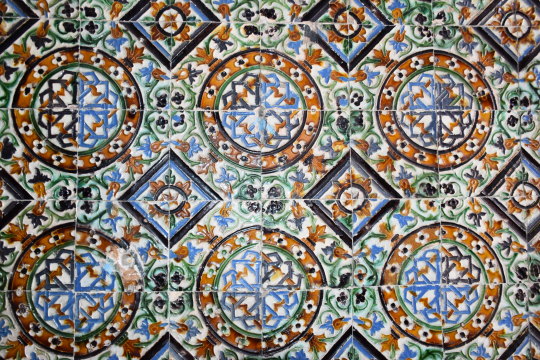

Andalucia (Sevilla) (2) (3) (4) (5) (6) by Caspar Tromp
Via Flickr:
(1) (5) Casa de los Pilates from the 1500s. The islamic "mudejar" style is pervasive in this magnificent monument through its stucco work, carvings, architecture, proportions, and tiles. In addition, another palace with garden completely in the Italian renaissance style forms part of this complex. (2) (4) Real Alcázar. Patio dating from the islamic Almohad dynasty from the 12th century. (6) Palacio de Lebrija, another 16th century mudejar palace.
23 notes
·
View notes
Text
#TilesOnTuesday :

Ceiling Tile (socarrat) with Design of a Lion
Paterna, Valencia region, Spain; Mudéjar period, c.1450-1500
Earthenware with red manganese oxide & black iron oxide pigments over white slip
14 x 17 5/16 x 15/16 in. (35.5 x 44 x 2.4 cm)
Saint Louis Art Museum 37:1939
“Overlaying the lively animal decorating the surface, this tile bears the stamp of the kilns at Paterna, just outside Valencia, Spain. It would have decorated a ceiling inside a local building, suspended between wooden rafters. The term for such ceiling tiles is socarrat, which means ‘burnt’ in the local dialect, referring to the process of baking in the kiln. Before they were baked, such tiles were painted with a white slip (clay thinned with water) and then with black and red pigments derived from manganese and iron. They were not glazed. The lion on this tile appears to be panting, while his tail swishes through the air.”
#Saint Louis Art Museum#animals in art#european art#tile#Spanish art#ceramics#lion#15th century art#Iberian art#earthenware#architectural art
68 notes
·
View notes
Text
Events 1.31 (before 1930)
314 – Pope Sylvester I is consecrated, as successor to the late Pope Miltiades. 1208 – The Battle of Lena takes place between King Sverker II of Sweden and his rival, Prince Eric, whose victory puts him on the throne as King Eric X of Sweden. 1266 – The Mudéjar of Murcia, who had rebelled against the Crown of Castile during the Mudéjar revolt of 1264–1266, surrender the city to James I of Aragon after a siege lasting a month. 1504 – The Treaty of Lyon ends the Italian War, confirming French domination of northern Italy, while Spain receives the Kingdom of Naples. 1578 – Eighty Years' War and Anglo-Spanish War: The Battle of Gembloux is a victory for Spanish forces led by Don John of Austria over a rebel army of Dutch, Flemish, English, Scottish, German, French and Walloons. 1606 – Gunpowder Plot: Four of the conspirators, including Guy Fawkes, are executed for treason by hanging, drawing and quartering, for plotting against Parliament and King James. 1609 – Wisselbank of Amsterdam established. 1703 – Forty-seven rōnin, under the command of Ōishi Kuranosuke, avenged the death of their master, by killing Kira Yoshinaka. 1747 – The first venereal diseases clinic opens at London Lock Hospital. 1814 – Gervasio Antonio de Posadas becomes Supreme Director of the United Provinces of the Río de la Plata (present-day Argentina). 1846 – After the Milwaukee Bridge War, the United States towns of Juneautown and Kilbourntown unify to create the City of Milwaukee. 1848 – John C. Frémont is court-martialed for mutiny and disobeying orders. 1862 – Alvan Graham Clark discovers the white dwarf star Sirius B, a companion of Sirius, through an 18.5-inch (47 cm) telescope now located at Northwestern University. 1865 – American Civil War: The United States Congress passes the Thirteenth Amendment to the United States Constitution, abolishing slavery, and submits it to the states for ratification. 1865 – American Civil War: Confederate General Robert E. Lee becomes general-in-chief of all Confederate armies. 1891 – History of Portugal: The first attempt at a Portuguese republican revolution breaks out in the northern city of Porto. 1900 – Datu Muhammad Salleh is killed in Kampung Teboh, Tambunan, ending the Mat Salleh Rebellion. 1901 – Anton Chekhov's Three Sisters premieres at Moscow Art Theatre in Russia. 1915 – World War I: Germany is the first to make large-scale use of poison gas in warfare in the Battle of Bolimów against Russia. 1917 – World War I: Kaiser Wilhelm II orders the resumption of unrestricted submarine warfare. 1918 – A series of accidental collisions on a misty Scottish night leads to the loss of two Royal Navy submarines with over a hundred lives, and damage to another five British warships. 1918 – Finnish Civil War: The Suinula massacre, which changes the nature of the war in a more hostile direction, takes place in Kangasala. 1919 – The Battle of George Square takes place in Glasgow, Scotland, during a campaign for shorter working hours. 1928 – Leon Trotsky is exiled to Alma-Ata.
0 notes
Text
Alcazar of Seville: A Glorious Journey Through History and Architecture

The Alcazar of Seville is not just a monument; it’s a living testament to centuries of history, culture, and artistry. Nestled in the heart of Seville, Spain, this magnificent palace complex draws millions of visitors annually, enchanted by its architectural splendor and captivating past. Let’s explore what makes this UNESCO World Heritage Site an unmissable destination.
Introduction to the Alcazar of Seville
A Brief History of Its Origins
The Alcazar of Seville, known locally as "Real Alcázar," began its story in the 10th century as a fortress under the Moorish Muslim rulers of Andalusia. Over the centuries, it evolved into a royal palace, reflecting the region's layered history. Initially constructed by the Umayyad caliphate, it became a key symbol of power and prestige.
Why It Is a UNESCO World Heritage Site
Designated as a UNESCO World Heritage Site in 1987, the Alcazar is recognized for its outstanding architectural and cultural significance. It embodies the fusion of Islamic, Christian, and Mudéjar styles, representing the coexistence of diverse civilizations that shaped its history.
The Rich History Behind the Alcazar
The Moorish Beginnings
The Alcazar's foundation was laid by the Moors, who introduced their advanced architectural techniques. Intricate geometric patterns, vibrant tiles, and peaceful courtyards reflected their artistic philosophy. This phase established the base for the Mudéjar style, which would dominate the palace’s design.
Transformation Under Christian Rule
When Seville was reconquered in 1248 by Ferdinand III of Castile, the Alcazar underwent a transformative phase. Christian monarchs, especially Pedro I, incorporated Gothic and Renaissance elements while preserving much of the Moorish artistry, resulting in a harmonious blend of cultures.
The Influence of Various Cultures
From Moorish rulers to Christian kings, each era left its mark on the Alcazar. The palace became a melting pot of Islamic, Gothic, Baroque, and Renaissance elements, symbolizing the rich tapestry of Andalusian heritage.
Architectural Marvels of the Alcazar
The Mudéjar Style: A Blend of Two Worlds
The Mudéjar style, unique to the Iberian Peninsula, is a highlight of the Alcazar. This architectural form merges Islamic aesthetics with Christian influences, creating a style that feels both timeless and intricate. The Alcazar is one of the finest examples of this hybrid art.
Key Architectural Features
The complex is a showcase of arches, domes, and detailed tilework. Visitors can marvel at the horseshoe arches, stalactite carvings, and arabesque motifs that define its visual identity.
Iconic Sections of the Alcazar
Some must-see sections include the Lion’s Gate, the Hall of Ambassadors, and the Courtyard of the Maidens. Each space tells a story, echoing the grandeur of the rulers who once walked these halls.
Famous Rooms and Courtyards
The Hall of Ambassadors
Known as the "Salón de Embajadores," this room was used for royal audiences and important gatherings. Its domed ceiling, adorned with gilded wood and intricate carvings, is a masterpiece that symbolizes the heavens.
The Patio de las Doncellas (Courtyard of the Maidens)
This iconic courtyard is the heart of the Alcazar. With its reflective pool flanked by ornate arches and lush gardens, it’s a stunning example of Mudéjar design and meticulous symmetry.
The Gardens: A Paradise on Earth
The gardens of the Alcazar, sprawling over hectares, are a tranquil escape filled with fountains, pavilions, and exotic plants. They seamlessly blend Moorish landscaping with Renaissance flair, offering visitors a serene retreat.
The Role of the Alcazar in Popular Culture
Game of Thrones and Its Filming in the Alcazar
Fans of the iconic series Game of Thrones may find the Alcazar of Seville familiar, as it served as the backdrop for the Kingdom of Dorne in the show's fifth season. The intricate details of the Alcazar's architecture, paired with its lush gardens, made it the perfect setting to bring the fictional world of Dorne to life. Key scenes, including the Water Gardens of Sunspear, were filmed here, attracting fans from all over the world.
Other Media Appearances
Beyond Game of Thrones, the Alcazar has been featured in several films, TV shows, and documentaries. Its timeless beauty and historical significance make it a popular choice for filmmakers seeking an authentic and visually stunning location. Documentaries often highlight its architectural brilliance and cultural layers, further cementing its place in global popular culture.
Exploring the Gardens
Unique Flora and Fauna
The gardens of the Alcazar are a botanical masterpiece, home to a diverse range of flora and fauna. From towering palm trees and vibrant bougainvillea to fragrant orange blossoms, the gardens offer a sensory feast. The chirping of birds and the gentle sound of fountains add to the tranquil atmosphere, making it a haven for nature lovers.
Must-See Spots in the Gardens
Key highlights of the gardens include the Mercury Pond, adorned with a statue of the Roman god Mercury, and the Labyrinth Garden, where visitors can lose themselves in its maze-like design. The Pavilion of Charles V is another gem, blending Renaissance and Moorish styles amidst lush greenery.
How the Gardens Reflect History
The gardens are not just about beauty—they reflect the evolving history of the Alcazar. Originally designed by the Moors, they were later expanded and modified by Christian monarchs, blending Islamic landscaping principles with European influences. This fusion is a testament to the cultural convergence that defines the Alcazar.
Tips for Visiting the Alcazar of Seville
Best Times to Visit
To fully enjoy the Alcazar, timing is key. Spring (March to May) and fall (September to November) are ideal, as the weather is pleasant, and the gardens are in full bloom. Visiting early in the morning or late in the afternoon can also help you avoid the crowds.
Ticket and Tour Options
Booking tickets in advance is highly recommended, especially during peak tourist seasons. Guided tours are an excellent way to delve into the Alcazar’s history and hidden gems. Audio guides are also available for those who prefer a self-paced exploration.
Accessibility and Visitor Amenities
The Alcazar is well-equipped for visitors with mobility challenges, offering ramps and elevators in most areas. On-site amenities include restrooms, a gift shop, and a café where you can enjoy refreshments amid historic surroundings.
The Alcazar as a Cultural Icon
Its Significance in Modern Spain
The Alcazar of Seville is more than a historic monument; it is a symbol of Spain’s rich cultural heritage. It continues to host royal ceremonies and events, serving as a bridge between the past and present. This dual role as a tourist attraction and a functional royal palace adds to its unique charm.
Preserving the Legacy for Future Generations
Efforts to preserve the Alcazar are ongoing, with initiatives aimed at restoring its intricate details and maintaining its gardens. These efforts ensure that future generations can continue to experience the magic of this architectural wonder.
Lesser-Known Facts About the Alcazar
The Hidden Secrets of the Alcazar
Did you know there are underground baths within the Alcazar? Known as the Baths of Lady María de Padilla, these vaulted chambers were used for relaxation and are a testament to the luxurious lifestyles of the past. Another hidden gem is the Whispering Gallery, where sounds can travel along the curved walls.
Intriguing Anecdotes from History
One fascinating story involves Pedro I, known as “Pedro the Cruel.” Despite his reputation, he was a patron of the arts and played a significant role in shaping the Alcazar. Legends also suggest that the Alcazar contains secret tunnels and chambers, adding an air of mystery to its already enchanting presence.
Nearby Attractions in Seville
Seville Cathedral and La Giralda
Located just steps away from the Alcazar, the Seville Cathedral is a must-visit. As the largest Gothic cathedral in the world, it houses the tomb of Christopher Columbus and offers breathtaking views from the La Giralda tower.
The Torre del Oro
Another nearby landmark is the Torre del Oro, a historic watchtower along the Guadalquivir River. Originally built by the Moors, it now serves as a maritime museum.
The Flamenco Culture of Seville
Seville is the heart of Flamenco, and a visit to the city isn’t complete without experiencing this passionate art form. Numerous Flamenco shows and tablaos near the Alcazar offer a glimpse into this vibrant tradition.
Why the Alcazar of Seville Is a Must-Visit
A Blend of History, Culture, and Art
The Alcazar is more than just a palace—it’s a living museum of history, culture, and art. Its walls tell stories of conquests and coexistence, while its gardens provide a serene escape from modern life.
Experiences That Make It Unique
Walking through the Alcazar feels like stepping into a different era. Whether it’s the intricate tilework, the serene courtyards, or the grand halls, every corner is a work of art that leaves a lasting impression.
Visitor Testimonials and Reviews
Stories from Travelers
Visitors often describe the Alcazar as "breathtaking" and "a masterpiece of design." Many rave about the beauty of the gardens and the sense of tranquility they offer. The rich history and cultural layers also leave a deep impact.
What Makes It Unforgettable
The blend of architectural styles, the historical significance, and the sheer beauty of the Alcazar create an unforgettable experience. It’s a place that leaves visitors in awe, inspiring them to return time and again.
Planning Your Trip to Seville
How to Get to the Alcazar
Seville is well-connected by train, bus, and air. From the city center, the Alcazar is easily accessible by foot, bike, or public transportation. Its central location makes it convenient for tourists.
Accommodation Options Nearby
Seville offers a range of accommodations, from luxury hotels to budget-friendly hostels, many within walking distance of the Alcazar. Staying nearby allows visitors to fully immerse themselves in the historic ambiance of the city.
Final Thoughts on the Alcazar of Seville
Recap of Its Historical and Cultural Importance
The Alcazar of Seville is a treasure trove of history and culture, representing centuries of artistic and architectural evolution. Its blend of styles and its role as a royal palace make it a unique destination.
Inspiring a Deeper Appreciation for Architecture
Visiting the Alcazar is a journey through time, offering insights into the craftsmanship and cultural exchange that defined an era. It’s an experience that inspires awe and a deeper appreciation for the beauty of human creativity.
Contact: Email: [email protected]
1 note
·
View note
Text
Las mejores ciudades para visitar en Europa
Europa es un continente rico en historia, cultura y paisajes impresionantes. Cada ciudad ofrece su encanto y atracciones únicas. Estas son algunas de las mejores ciudades para visitar, cada una con su personalidad distintiva y lugares de interés imperdibles.
Barcelona, España Barcelona, la vibrante capital de Cataluña, es famosa por su combinación única de arquitectura modernista y gótica. El monumento más emblemático de la ciudad es la Sagrada Familia, una basílica diseñada por el legendario arquitecto Antoni Gaudí. El Parque Güell, otra obra maestra de Gaudí, ofrece impresionantes vistas de la ciudad. Las Ramblas, una animada calle llena de tiendas, cafés y artistas callejeros, es perfecta para un paseo tranquilo. El Barrio Gótico, con sus estrechas calles medievales, es rico en historia y encanto. Las playas de Barcelona, como la Barceloneta, ofrecen un lugar perfecto para relajarse.
Roma, Italia Roma, la Ciudad Eterna, es un museo viviente. El Coliseo, un antiguo anfiteatro, es un símbolo de la grandeza de Roma. El Foro Romano y el Monte Palatino ofrecen una visión del pasado imperial de la ciudad. La Ciudad del Vaticano, donde se encuentran la Basílica de San Pedro y los Museos Vaticanos, incluida la Capilla Sixtina, es una visita obligada. La Fontana de Trevi, donde la tradición dice que hay que lanzar una moneda para asegurar el regreso a Roma, y la Plaza de España también son lugares emblemáticos. Los vibrantes barrios de Roma, como Trastevere, ofrecen auténtica gastronomía italiana y vida nocturna.
Florencia, Italia Florencia, la cuna del Renacimiento, es famosa por su arte y arquitectura. La Galería de los Uffizi alberga obras maestras de Miguel Ángel, Leonardo da Vinci y Botticelli. La Catedral de Florencia, con su icónica cúpula diseñada por Brunelleschi, domina el horizonte de la ciudad. El Ponte Vecchio, un puente medieval bordeado de tiendas, ofrece pintorescas vistas del río Arno. El Palazzo Vecchio y los Jardines de Boboli también son atracciones notables. La rica tradición culinaria de Florencia la convierte en un paraíso para los amantes de la buena comida.
Sevilla, España Sevilla, la capital de Andalucía, es conocida por su baile flamenco, su arquitectura morisca y sus vibrantes festivales. La Catedral de Sevilla, la catedral gótica más grande del mundo, y la Giralda son lugares de visita obligada. El Alcázar de Sevilla, un palacio real con exuberantes jardines, exhibe arquitectura mudéjar. La Plaza de España, con su impresionante arquitectura renacentista, es otro punto destacado. Los animados barrios de Sevilla, como Santa Cruz, ofrecen una muestra de la cultura y la gastronomía locales.
Edimburgo, Escocia Edimburgo, la capital de Escocia, es una ciudad de historia y festivales. El Castillo de Edimburgo, encaramado en un volcán extinto, ofrece impresionantes vistas de la ciudad. La Royal Mile, que se extiende desde el castillo hasta el Palacio de Holyroodhouse, está llena de edificios históricos, tiendas y pubs. La Ciudad Nueva de la ciudad, con su arquitectura georgiana, es Patrimonio de la Humanidad por la UNESCO. Edimburgo también es famosa por sus festivales, incluido el Festival Fringe de Edimburgo, el festival de arte más grande del mundo.
Cracovia, Polonia Cracovia, una de las ciudades más antiguas de Polonia, es conocida por su núcleo medieval bien conservado y su barrio judío. La Plaza del Mercado, una de las plazas medievales más grandes de Europa, alberga la Lonja de los Paños y la Basílica de Santa María. El Castillo y la Catedral de Wawel, encaramados en la colina de Wawel, son símbolos del Estado polaco. El distrito de Kazimierz, el histórico barrio judío, es rico en cultura e historia. Cracovia también es una puerta de entrada al campo de concentración de Auschwitz-Birkenau, un conmovedor recordatorio del Holocausto.
Oporto, Portugal Oporto, famosa por su vino de Oporto, es una ciudad de calles encantadoras y una cultura vibrante. El distrito de Ribeira, con sus casas coloridas y cafés junto al río, es Patrimonio de la Humanidad de la UNESCO. El Puente Dom Luís I ofrece vistas panorámicas del río Duero. La Livraria Lello, una de las librerías más bonitas del mundo, es una visita obligada. Las bodegas de vino de Oporto, donde se puede degustar y aprender sobre el vino de Oporto, también son atracciones populares.
Atenas, Grecia Atenas, la cuna de la civilización occidental, es una ciudad donde la historia antigua se encuentra con la vitalidad moderna. La Acrópolis, con el templo del Partenón, domina el horizonte. El Museo de la Acrópolis y el Museo Arqueológico Nacional ofrecen una inmersión profunda en la historia griega. El barrio de Plaka, con sus calles estrechas y casas neoclásicas, es perfecto para explorar. La plaza Syntagma, con el cambio de guardia en el Parlamento helénico, es un punto focal de la Atenas moderna.
Nápoles, Italia Nápoles, una ciudad con una rica historia y una vibrante vida callejera, es la puerta de entrada a la costa de Amalfi y Pompeya. El centro histórico, declarado Patrimonio de la Humanidad por la UNESCO, está lleno de calles estrechas, iglesias y mercados animados. El Museo Arqueológico Nacional de Nápoles alberga una impresionante colección de artefactos de Pompeya y Herculano. Nápoles también es famosa por su pizza, y ninguna visita está completa sin probar una auténtica pizza napolitana.
Venecia, Italia Venecia, la ciudad de los canales, no se parece a ningún otro lugar del mundo. El Gran Canal, bordeado de palacios renacentistas y góticos, se explora mejor en góndola. La Basílica de San Marcos, con sus impresionantes mosaicos, y el Palacio Ducal adyacente son atracciones imprescindibles. El Puente de Rialto ofrece vistas icónicas del canal. Los canales más pequeños y los callejones estrechos de Venecia son perfectos para perderse y descubrir joyas ocultas. El arte y la arquitectura de la ciudad, combinados con su entorno único, la convierten en una visita obligada.
0 notes
Text










DOS ESCULTURAS DE CERÁMICA del ARTISTA ARAGONÉS FERNANDO MALO
Fernando Malo.
Zaragoza. ESPAÑA.
1957
Estudios de cerámica en la Escuela Massana de Barcelona (1976-1981). Es fundador del colectivo «Cerámica y Ceramistas» en 1982, que crea y organiza las actividades en la Plaza San Felipe de Zaragoza.
En 1991 comienza a trabajar en la Restauración del Patrimonio Artístico, realizando copias cerámicas del arte mudéjar para los mas importantes monumentos como la Aljafería, la Catedral de Zaragoza, la torre de Utebo o la Alhambra de Granada. Participa en diferentes encuentros, ferias, exposiciones, congresos tanto en España como fuera del territorio.
Con la entrada del S.XXI, forma parte del comité organizador de la Feria Internacional de Cerámica CERCO. Continuando su obra personal y su trabajo didáctico especializado en el arte mudéjar.
Desde 2005, colabora en diferentes proyectos con ceramistas en Argelia y Túnez.
Ha realizado 40 exposiciones individuales y mas de 50 colectivas en España y en el extranjero.
La obra creativa de Fernando Malo se inspira desde su origen en la tradición ancestral de la tierra, formas primitivas, sensibilidad, interpretación de la naturaleza, unión de la técnica y el gesto.
Utiliza arcillas de alta temperatura y esmaltes de producción propia para crear sus piezas.
A través del contacto con los modelos de la cerámica mudéjar, surge su creación que funde la estética del último periodo islámico en la Península Ibérica con las nuevas tendencias del arte contemporáneo que él denomina Mudéjar S.XXI.
LAS PIEZAS QUE SE PRESENTAN SON DOS MURALES CON CENEFAS DE ESTILO MUDEJAR EN AMBOS LADOS. EL MURAL DE GRES SEMICIRCULAR RECUERDA POR SU COLOR OCRE, LAS PAREDES DE ADOBE Y LADRILLO DE LOS PALACIOS MUDEJARES. EL ESMALTE DE LAS CENEZAS ES DE CLARA INSPIRACIÓN ARABE POR SU DISEÑO Y COLOR. LAS DOS OBRAS SE APOYAN EN UNA BASE DE ACERO DE 0,6 cms DE GROSOR Y UNAS MEDIDAS DE 25 x 8 cms
CARACTERÍSTICAS OBRAS:
LONGITUD: 22,7 y 23,6 cms.
ALTURA (SIN BASE) : 20,2 y 18,4 cms
GROSOR VARIABLE EN AMBAS, de 3,5 a 1,3 y 3 a 1,2 cms
PESO: 2.144 y 2.428 grs.
LAS OBRAS SE ENCUENTRAN EN PERFECTO ESTADO
LAS FOTOGRAFÍAS SON PARTE DE LA DESCRIPCIÓN
500 € más gastos de envío
0 notes